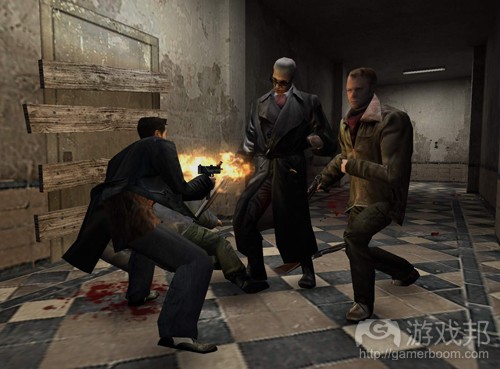阐述游戏让玩家觉得自己很重要的技巧
作者:Ben Serviss
每个人都喜欢“觉得自己很重要”的感觉。这就是为什么你更倾向于听那些称呼你为“先生”或“女士”的人说话,而不是那些叫你“喂”或“听着,笨蛋”的人。这就是为什么兄长通常感觉到自己对弟妹肩负着一种崇高的责任感。“觉得自己很重要”是一个吸引玩家在你的游戏中花时间和精力的强大工具。
“人类最强烈的欲望就是‘觉得自己很重要’”。——John Dewey(游戏邦注:20世纪伟大的美国教育家和哲学家)
所以,你要怎么做才能让玩家觉得自己很重要?办法有很多,为了找到最好的一个,我们应该好好探究一下这个话题。以下是几个通用的技巧:
突出玩家活动的重要性
考虑到游戏的本质交互性,这是显而易见的一步。但令人意外的是,开发者往往忽略了。例如,如果玩家折腾农场的猪仔或羊羔时听不到一声叫唤,基本上就相当于朝所有人竖中指却没有人注意到。在这两种情况下,言外之意就是:你被游戏彻底无视了。
在开发《半条命》时,Valve明智地意识到让游戏反馈玩家行为非常重要;他们的执行显然是使游戏产生前所未有的沉浸感的重要原因。
“我们想到的第二个理论是玩家认同感理论。根据这个理论,每一次玩家执行一个动作,游戏世界都必须予以承认……我们的基本观点是,如果这个游戏世界无视玩家,那么玩家也不会在乎这款游戏。”——Ken Birdwell,Valve
这一条也适用于游戏角色。当然,为了充分利用它,你必须创造出值得玩家关注的角色。
例如,《孤岛惊魂3》经常被批评,配角的作用就是会走路的McGuffin(游戏邦注:这是指书或电影中用来推动情节发展的对象或事件),通过拯救这些配角,玩家才有升级技能和探索游戏世界的动机。然而,在《合金装备》中,配角却更有深度,与世界的相关性更大;尽管大多受限于静态面画和脚本对话。
二者的关键区别在于,在设定好的互动活动中,《合金装备》的玩家有全部的控制权。几乎每一次玩家主动向角色求助或发起聊天时,他都会看到游戏世界中独特的交互活动、角色的背景故事,从而强化角色与玩家之间的关系纽带。
强化利益相关性
国家被袭击了!世界危在旦夕!宇宙遭外星人破坏了!这些华而不实、空洞的陈腔滥调总是没有发挥任何效果,游戏仍然无法让玩家热血沸腾。为了求玩家关注而发起一场史诗般宏大的战争,这种构建故事的方法实在太幼稚了,遗憾的是仍然有太多游戏在这么做。
不要通过这些骇人听闻但肤浅的大呼小叫来唤起玩家的沉浸感,而要在游戏过程中有组织有计划地催发玩家的身临其境之感。世界危在旦夕?管它呢——反正又不是真实世界。但是,当《最终幻想7》中的艾丽斯被杀死时,玩家觉得自己不只是失去了一个感人至深的角色,当玩家意识到自己再也不能使用她的特殊战斗技能时,又会黯然想起她的离开。与华丽的过场动画相比,这些得失对玩家的意义更大。
在这方面,《半条命2》在开头的场景中做得非常好。玩家为了继续游戏,别无选择只能遵从守卫的命令,游戏让玩家产生无助感,进而对城市的独裁警方感到愤慨,最终使玩家对袭击产生更大的满足感。通过强化游戏世界的利益得失与玩家体验之间的关系,Valve达到了让玩家觉得自己成为举足轻重的革命者的满意结果。
不要闲置玩家
如果以上建议似乎是常识,那么与这一条显而易见的建议相比,就更加无力了。虽然某类游戏的玩家往往对自己喜欢的类型更加宽容,但任何类型的游戏如果频繁地使用冗长的过场动画或任何玩家不能操作的事件,都会让玩家觉得被无视了。在2013年的游戏开发者大会上,资深游戏设计师Matthias Worch在他的演讲《对话玩家——文化潮流如何改变游戏和关卡设计》中恰当地总结道:
“想像一下:你跟某人一边走着一边说着话……正当你讲得正欢,这个一个家伙突然抓住你的手,把你拖着走,无视你正在说的话……在现实生活中,我们是无法容忍这种行为的。那么我们又怎么能允许游戏这么做?”—-Matthias Worch
当你注意到一些著名的违规案例,你就会觉得Worch的类比确实很形象。比如,《Max Payne 3》中经常出现电影片段,令人愤怒,除了打断玩家的游戏,还阻碍玩家进入流状态。这一款强调剧情的游戏正是靠它的过场动画出名的!
《Max Payne》成为好案例是因为这个特殊原因,也解释了另一点:如果你绝对需要非互动性的过场动画,使用游戏中的角色不出现的电影片段的罪过要小很多。这里的角色是指由玩家操作的角色。
具体地说,在《Max Payne》系列的前两部中,玩家在游戏世界中操纵一个3D角色和观看由真人演员扮演该角色的漫画书式的过场动画。因为你不能控制演员,玩家在前两部中操作的3D角色与过场动画中的角色之间的差距,和玩家在《Max Payne3》中操作的角色与其过场动画中的角色之间的差距相比,并不那么明显,所以玩家并不会感到自己像在《Max Payne3》中那样被严重无视了。
因为玩家看到的是自己原本无法看到的东西,所以不会感到愤怒,而当玩家看到一直控制的角色突然脱离自己的控制,独立行动起来了,效果就不一样了。在这后一种情况中,言外之意就是:游戏不需要你。当你被告之,你是不被需要的,任何人都很难觉得自己是重要的。
总是感谢玩家参与游戏
无论是在什么游戏中,玩家永远是最重要的角色。你应该确保他们觉得自己就是你精心设计的体验中的重要部分,这样你才能培养出期待你的下一款游戏的忠实粉丝。(本文为游戏邦/gamerboom.com编译,拒绝任何不保留版权的转载,如需转载请联系:游戏邦)
The Importance of Making Players Feel Important
by Ben Serviss
Everybody likes feeling important. It’s the reason why you’re more inclined to listen to someone if they address you as “Sir” or “Miss” as opposed to “Hey you” or “Listen, schmuck.” It’s the reason why older siblings often feel a heightened sense of responsibility for younger brethren. And it’s a powerful tool to draw players into your game and give it the time and effort it deserves.
“The deepest urge in human nature is ‘the desire to be important.’” –John Dewey
So how do you go about making your players feel important? There are many methods, and this is a topic well worth investigating in order to find the best ways to utilize its powers for your specific game.Here are a few universal tips to keep in mind when looking for ways to empower your players with almighty meaning.
Make Their Actions Matter
This is an obvious step considering the interactive nature of games, but it’s odd how often developers forget it. Say, for example, if the player’s able to empty round after round into farm animals with nary a grunt from each pig or goat, it’s basically the in-game equivalent of running around giving the finger to everybody and being ignored. In both situations, the subtext is clear: nobody in this game is paying attention to you.
Valve smartly realized the importance of implementing user feedback on behalf of the world during development of Half-Life, and this realization certainly contributed to that game’s groundbreaking sense of immersion when it was released.
“The second theory we came up with is the theory of player acknowledgment. This means that the game world must acknowledge players every time they perform an action. … Our basic theory was that if the world ignores the player, the player won’t care about the world.” –Ken Birdwell, Valve
This applies to the characters in your game as well. Of course, for this to capitalize on its potential, you need to create characters that are worth investing time into.
For example, Far Cry 3’s frequently maligned supporting cast of entitled rich party kids only serves as walking maguffins to rescue as you upgrade your skills and explore the game world. On the other hand, the support characters in any Metal Gear Solid game emit far more depth and relatability, despite mostly being confined to static codec screens and scripted conversations.
The key difference here is that outside of scripted interactions, the player has full control over when he decides to talk with them. Almost every time the player voluntarily calls a character for help or just to chat, he’s greeted with a unique interaction that fills out the game’s world, trickles in more of the character’s backstory, and strengthens the bond between the character and the player.
Make the Stakes Relevant
The country is under attack! The fate of the world is in danger! Some madman is threatening the universe! How many times have these grandiose, empty threats done exactly nothing to get you invested in whatever clichéd yarn a game is desperately trying to spin? Setting up an epic-scale conflict because it obviously begs the player’s interest is a na?ve way to build a compelling story that’s sadly still overused.
The world is being invaded! …That means players automatically care about the story, right? [Screenshot from Resistance 3]
Instead of blowing out a sensational yet flimsy premise in attempts to whip up engagement, take pains to build investment methodically over the course of the game. The world is under attack? Who cares – it’s not the real world. But when Aeris is killed in Final Fantasy VII, not only is the loss of just one character incredibly moving, but you feel her absence in gameplay when you realize you’ll never use her unique combat abilities again. These are stakes that mean far more to the player than yet another explosion-filled pre-rendered cutscene.
Half-Life 2 does this well in the infamous “pick up that can” scene in the beginning. You have no other option but to comply with the guard’s request in order to continue, and that sense of powerless intentionally leaves you with a grudging resentment for the city’s authoritarian police force, making the eventual assault on the Combine even more satisfying. By taking the time to build meaningful stakes relevant to the player’s experience, Valve was able to cash this in for a satisfying payoff that made the player feel like a revolutionary.
Don’t Sideline the Player
If these tips seem like common sense, they pale in comparison to the obviousness of this one. While fans of certain genres tend to tolerate them better than others, using frequent, lengthy cutscenes or non-playable sequences of any kind is tantamount to ignoring the player. Veteran game designer Matthias Worch sums this up aptly in his GDC 2013 talk “Talking to the Player – How Cultural Currents Shape Game and Level Design”.
“Imagine this: You’re walking alongside somebody, engaged in a conversation… and just as you’re having this really interesting, deep exchange, the other guy abruptly grabs you by the arm and starts pulling and shoving you around, and he’s just ignoring everything you say from now on… Now, we wouldn’t put up with this in real life. Why would we let games do it?” –Matthias Worch
Worch’s analogy holds up remarkably well when you start looking at some well-known offenders. The frequent, interrupting cinematics in Max Payne 3 raised ire considering how consistently they halted gameplay, preventing players from reaching a more focused flow state. And this is from a story-heavy franchise known for its cutscenes!
Max Payne is a great example for this specific reason, and to explain another point: If you absolutely require non-interactive cutscenes, it’s a far lesser sin to use cinematics where the player’s character as he sees him in the game is not present. This refers to the player’s avatar as controlled by the player, versus other representations.
To elaborate: In the first two Max Payne games, you control a 3D avatar through a world and read comic book-style cutscenes portraying a human actor as the same character. Since you can’t control the actor, the disconnect between what you normally have control over (the 3D avatar) is not nearly as pronounced as it is in games with in-engine cutscenes (Max Payne 3), so the player doesn’t feel such a pronounced sense of being ignored.
Since you’re being shown something that the player otherwise wouldn’t be able to see, it doesn’t strike the same nerve that watching the avatar you’ve been controlling up to now suddenly start acting on his own. In the the case of the latter, the subtext is clear: the game doesn’t need you. And it’s certainly hard for anyone to feel important when you’re told you’re not needed.
Always Say Thank You (For Playing)
The player is always the most important character in any game. Taking time to make sure they feel like an empowered, vital piece of the experience you’ve lovingly crafted for them will do wonders in creating loyal fans eager to see what you’ll bring them next.(source:gamasutra)
上一篇:分享开发者优化移动用户体验的方法











































